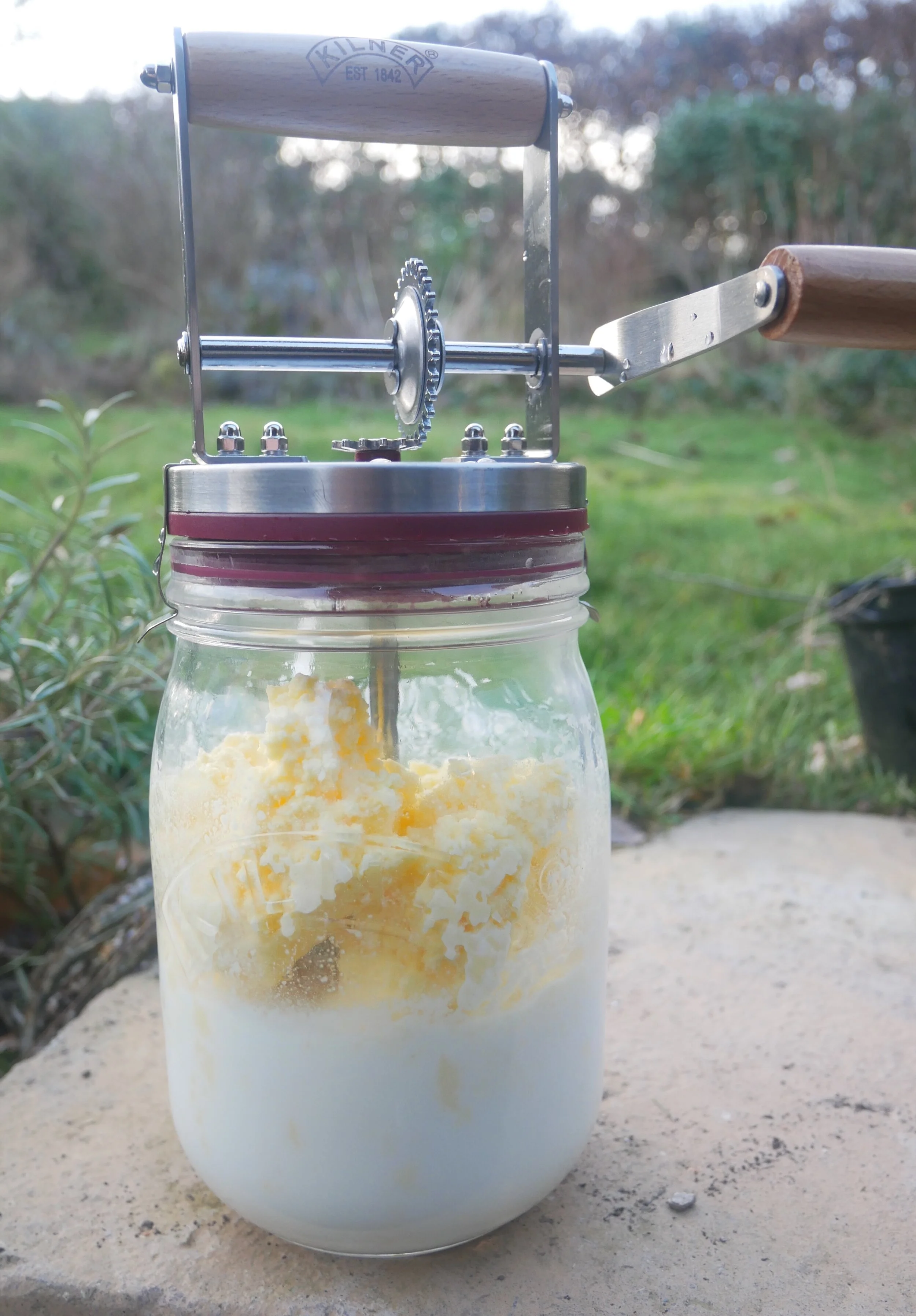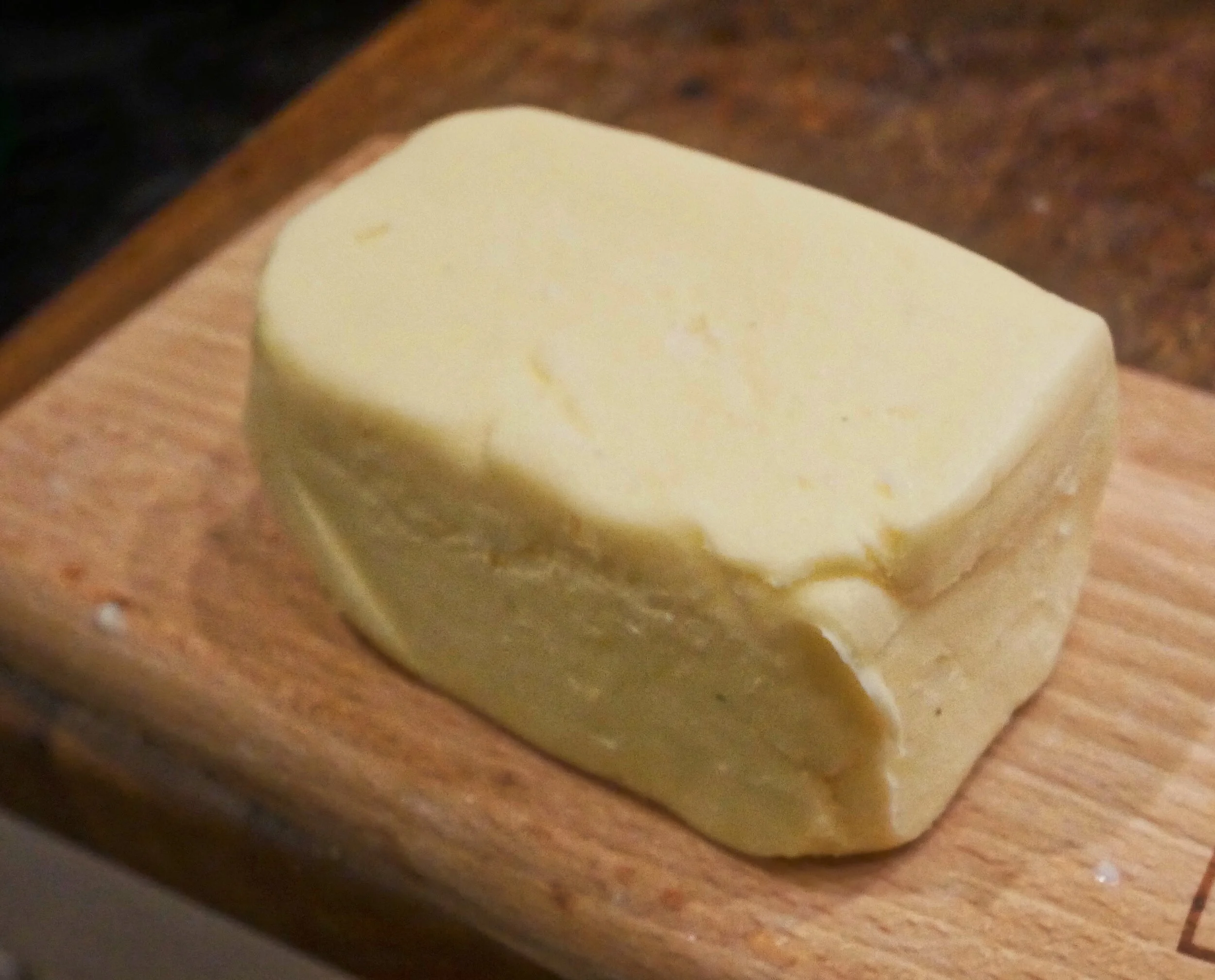Making Your own Butter, Better
There are times after all the midwinter festivities in January when all you want in your diet is simplicity. And things don’t get much more simple than bread and butter - which happens to be the title of a book I reviewed a year or two ago.
However, if you are going to pick up the tome by Richard Snapes, Grant Harrington and Eve Hemingway, do not think you are in for an easy, plain and simple ride. The book could inspire you to do something completely new and revelatory. It did me. For more than 60 years I have eaten the latter part of the book’s title - but never once in all that time have I ever dreamed of making butter.
Bread, yes. On numerous occasions. Although my bread making ability does leave a lot to be desired. But butter? Who makes their own butter? You can buy perfectly good West Country butter in just about any grocery shop - and I particularly recommend that made by Cornwall’s excellent Trewithen Dairy.
However when you see the chapter on butter in the book, you might find yourself rising to a challenge.
“The heights that the simple, staple ingredient butter could reach was an absolute revelation,” writes Grant Harrington when descending a chef’s job he was given at a restaurant called Faviken, run by world-famous Magnus Nilsson, in Sweden. “I tried the butter on my first day on the job and literally did a double take – the flavour just blew me away, and it inspired me to pursue this butter-making path.
“I learnt a lot about the traditional and ancient techniques that produce this more flavourful, buttery butter in Sweden, and back home I spent a year researching dairy fermentation and butter, with a focus on the science of lactic cultures,” writes Grant.
My own homemade butter
Ok… So there’s butter, and there’s butter - which is enough to make any reader ask: what am I missing out on?
“The fermented cream before churning adds a distinct butyric tang,” says Grant in his chapter on “cultured butter”.
“When I broke chunks off the cold block of butter with a fork (in Sweden), tiny remnants would remained on the chopping board - tasting these shards made me realise just how uncared for and plain such an important staple ingredient had come to be, and it made me want everyone in the world to taste something as good as this.”
And so the chapter introduces the home-cook to a basic recipe for making cultured butter - which is basically where you introduce a small quantity “live” culture (such as yoghurt or creme fraiche) as a starter to double cream and leave the mix over the best part of two days, which means 20 hours at room temperature and 20 hours in the fridge (see panel).
Then you churn, in the traditional way. And whey is what you get, if you’ll excuse the pun - along with rich, wonderful, creamy butter.
So taken was I with the concept that I purchased a mini-Kilner butter-churner off the internet for £20. I followed the simple instructions in Bread & Butter and hey-presto!
I haven’t experienced the wonder of such magic since I was a student and learned to develop black and white photographs in a darkroom. By which I mean, the wonder of seeing something coming out of nothing…
For four or five minutes I cranked the handle of my little churner and began to think that, in typical Hesp-fashion, I’d misread the instructions… When all of a sudden, it started happening. The crank handle suddenly became much harder to turn and, looking into the glass jar, I could see the paddles were wrapped in something cloying and yellow.
A few more turns, followed by a draining off of the whey - then some kneading by hand, followed by the traditional whacking with wooden bats to make the perfect butter pat.
Blimey! What a thrill! 60-plus years on the planet - at least a sliver of butter almost every day of my life - and suddenly I’ve made a superior version of it myself!
Grant Harrington doesn’t leave it there. His main chapter on butter goes on to give recipes for numerous flavoured butters, some of which we’ve published here.
As I’ve said above, for me this was a revelation. Now I am going to follow every complex step in the making of Richard Snapes’ fabulous sounding sourdough bread. It will take more time and effort than the butter, but making a sourdough is something I’ve been meaning to do for a long time.
I like the whole feel of this project, especially at this time of the year. A keen foodie of my age can be in danger of being like the dog that chases its own tail. You are constantly on the lookout for something new - something exotic - a cuisine you’ve never tried before. You’ve cooked so many recipes down the years, you’ve become almost lost in your own expertise…
Then someone says: “Forget all that for a moment. Why not do something very very simple - and do it very very well.”
Which is why I’m on a new quest. My ambition is to make the perfect slice of bread and butter. Not just something passable or even moderately good, but perfect. Better, even, than something you’d get in a Michelin starred restaurant.
Next maybe I will be able to make some of Eve Hemingway’s excellent recipes which make up the last third of the new book. Not surprisingly, even her sandwiches seem to be in a league of their own.
The three authors write about being in a cookbook shop marvelling at all the 100s of exotic sounding titles… “At first we couldn’t see how bread and butter, two such quotidian foodstuffs, could stand up to these vibrant and exotic subjects,” they say.
“Surely, they could not transport you beyond the familiar, or aid digestion or teach you something you didn’t know because: you eat them every day. Or most days at least.
“Yet, on reflection, we realised that bread and butter can do all of these things,” conclude the authors. And they are right. Brilliant bread and butter can eclipse just about anything.
Bread & Butter: History, Culture, Recipes by Richard Snapes, Grant Harrington & Eve Hemingway (Quadrille, £22) Photography © Patricia Niven
RECIPES
Cultured Butter
Ingredients
1 litre (1 quart) 40% fat high-quality double (thick) cream
100ml (3½fl oz) sour cream, crème fraîche or yogurt, which is the starter
rock salt, to taste (approx. 20g/¾oz)
Makes about 500g (1lb 2oz) butter and an equal amount cultured buttermilk
In a large and spotlessly clean bowl, mix together your cream and starter (sour cream, crème fraîche or yogurt), stirring well to make sure the starter is fully incorporated.
Cover the bowl with muslin and leave at room temperature (about 25ºC/77ºF) for 20 hours.
When the time is up replace the muslin with plastic wrap/clingfilm and chill in the fridge for a further 20 hours.
Remove the cultured cream from the fridge and leave it at room temperature for about an hour, or until it has warmed to around 8–14ºC (46–57ºF).
This chilling and warming encourages the bacteria to develop and the cream
to ferment.
Now we’re ready to churn. Using an electric stand mixer or hand-held beaters on medium-high speed (or even whisking by hand if you’ve got arms like an ox) begin to whisk your
cultured cream. It’s important to have your bowl no more than half full, as the
cream will expand before it splits.
When the cream completely splits to form yellow globules (called popcorn butter) and liquid (buttermilk), strain through a sieve, reserving both the popcorn butter and the buttermilk.
This cultured buttermilk will keep for 12 days in the fridge.
Quickly knead the popcorn butter on a cold, clean surface by working it with the heels of your hands, squeezing out any remaining buttermilk until all the moisture has been removed from your butter.
Season with salt to taste. Then hand-knead the butter again to release any final excess of moisture.
The cultured butter will keep for up to 3 weeks in the fridge, and will continue to mature and develop over that time.
Cultured Butter Variations
Wild Garlic Butter
When in season between March and June, wild garlic is easy to find in most
Northern European woodlands, and it offers an abundance of pungent
deliciousness. This butter is my favourite way of preserving the fresh garlic flavour.
Once blended and rolled into a log, it can be easily frozen for use throughout the
year. Outstandingly simple and satisfying stirred through hot pasta.
Makes about 200g (7oz)
Ingredients
60g (2oz) wild garlic leaves (ramsons), finely chopped
200g (7oz) Cultured Butter (page 140), softened
Fold the wild garlic into the butter.
Place on a piece of plastic wrap/clingfilm and roll into a log, then twist and tie the
ends to seal. Freeze until needed. The butter will keep for up to 3 weeks in the
fridge, and will continue to mature and develop over that time.
Seaweed Butter
Seaweed types vary, this recipe works well with pepper dulse, which can
be foraged in the UK and dried at home. However, a high quality nori from a
Japanese food supplier can be just as rich and savoury. This is an incredible
finishing butter atop fresh fish – try it with steamed haddock and you’ll be sold.
Makes about 200g (7oz)
Ingredients
30g (1oz) finely chopped dried seaweed
200g (7oz) Cultured Butter (page 140), softened
Fold the seaweed into room temperature butter using the back of a spoon.
Place on a piece of plastic wrap/clingfilm and roll into a log, then twist and tie the
ends to seal. Freeze until needed. The butter will keep for up to 3 weeks in the
fridge, and will continue to mature and develop over that time.






